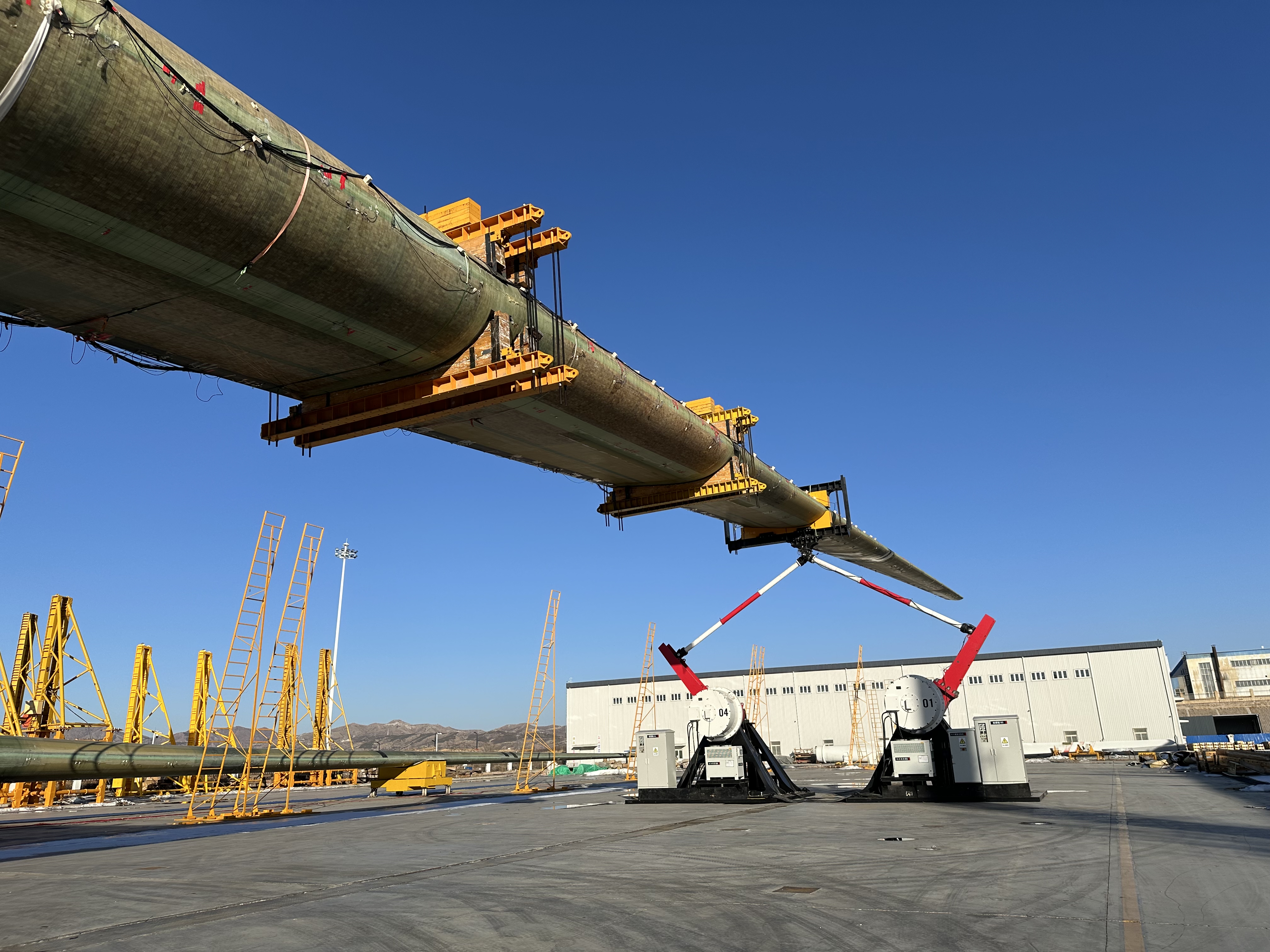Global Site

Recently, China's first set of dual-axis ground based exciter independently developed and designed by SANY Renewable Energy (SANY RE) was officially put into use. This is the first integrated test for fatigue testing of ultra-long blades in China, satisfying the verification demands for blade performance of 30 MW-class wind turbines.
Industry-leading Level
In the context of continued development of larger wind turbines, as one of the three key components of wind turbines, blades have rapidly exceeded 100 meters in length. In 2008, China's first piece of self-produced 38-metre wind turbine blade rolled off the production line. Now in 2024, SANY RE successfully launched the self-designed and self-produced 131-metre blade, which is deemed as the world's longest onshore wind turbine blade.
At the same time, blade length exceeding 100 meters also put forward new challenges for blade reliability verification. The single load of the traditional single-axis testing system can no longer meet the needs of ultra-long blade performance verification. Moreover, the test cycle of 8 to 10 months for a single blade can hardly keep pace with the current rapid iteration of large-scale wind turbine units.
Rigorous Verification
SANY RE, as the first OEM worldwide to step into the "no man's land" of design and manufacturing for 130-metre wind turbine blade, is well aware of the fact that the full verification of key components is an important guarantee for the quality and operational safety of wind turbines.
In order to realize the verification for ultra-long blades with high efficiency, high precision and low risk, SANY RE takes the lead in the exploration of verification for large megawatts wind turbine blades.
Dual-axis Ground Based Exciter

China’s first set of dual-axis ground based exciter independently developed and designed by SANY Renewable Energy (SANY RE) was officially put into use recently.
The system consists of two modular excitation units, and no gearboxes and to link-arms, which are controlled by a collaborative crank rocker mechanism instead of conventional mass pendulum. Through controllable coupling loading of multi-directional loads on the blades, the biaxial fatigue test of full-scale blade can be realized.
Compared with the traditional uniaxial test method, the biaxial fatigue test are more realistic when comparing to real life operation where edge-wise and flap-wise loads occur simultaneously, which can shorten the test verification time by about one third. This system can also achieve faster setup since force and frequency are not coupled in dual-axis ground based exciter, in the classic rotating mass these are linked.
The system offers direct measurement of applied force and blade movement, which increases accuracy of the quantification of applied loads and accumulated damage. This system can sweep for natural frequency, tune the input force independently during setup, and also developed and fully support with model based design methods.
Notably, the test system has a maximum excitation force of 140 kN for dual-axis testing, which can cover the verification requirements of 30 MW wind turbines. At present, the system has successfully completed the testing and verification work on 112-meter blades and will continue to test and verify the 131-meter blades recently launched.
The launch of the dual-axis ground based exciter is an important part of SANY Renewable Energy's multi-level verification system for wind turbines, and it is also a breakthrough in China's wind turbine blade verification field.
In the future, this system will provide powerful support for the efficient, accurate, and comprehensive test verification for hundred-meter-long blades, continuously promoting the high-reliability development of large megawatt units.